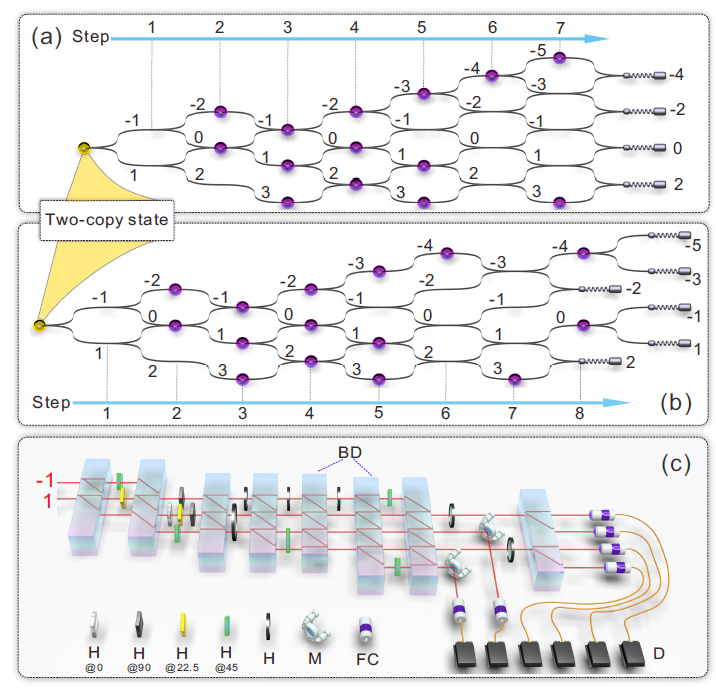Nov 23 2020
Researchers have performed the first experiment using entangled collective measurement to reduce quantum measurement backaction in relation to the photonic system.
 Conceptual design of the quantum work and its experimental realization. Image Credit: WU Kangda et al.
Conceptual design of the quantum work and its experimental realization. Image Credit: WU Kangda et al.
The experiment was performed by Prof. LI Chuanfeng’s team and Professor XIANG Guoyong’s team from the University of Science and Technology of China (USTC), Chinese Academy of Sciences (CAS), in collaboration with theoretical physicists from Switzerland, Italy, and Germany and under the guidance of academician Prof. GUO Guangcan from the CAS.
The findings of the study were published online in the Physical Review Letters journal on November 16th, 2020.
When an observable object is measured two times on a varying coherent quantum system, the initial measurement generally alters the statistical data of the second measurement since the first measurement broke the system’s quantum coherence, which is known as measurement backaction.
A former theoretical study by Dr Mart í Perarnau Llobet in 2017 noted that, without breaking the fundamental prerequisites of quantum thermodynamics, measurement backaction cannot be avoided entirely, but the degree of backaction brought about by predictive measurement can be decreased via collective measurement.
Using the findings of the above-mentioned theoretical study, Prof. XIANG and coauthors achieved the quantum collective measurement and were successful in noticing the decrease of measurement backaction in 2019.
The quantum collective measurements employed in earlier works were separable; thus, a natural question arises: if there is a quantum entangled collective measurement that decreases more backaction compared to what has been realized.
Together with his theoretical collaborators, Prof. XIANG analyzed the maximum collective measurement in the two-qubit system. They discovered that there is a maximum entanglement collective measurement theoretically, which can decrease the backaction in a two-qubit system, and the backaction can be suppressed to zero in the event of strongly coherent evolution.
They then developed and executed the entanglement measurement through a photonic quantum walk, with a fidelity of up to 98.5%, and noticed the decrease of the reaction of prediction measurement.
This study is crucial in the study of collective measurement and quantum thermodynamics.
The referees remarked on the study as representing significant progress in the field: “The experiment is well executed, as the results follow closely what one would expect from an ideal implementation. Overall, I find the article a highly interesting contribution to the topic of quantum backaction and a great combination of new theory and flawless experimental implementation.”
Journal Reference:
Wu, K.-D., et al. (2020) Minimizing Backaction through Entangled Measurements. Physical Review Letters. doi.org/10.1103/PhysRevLett.125.210401.